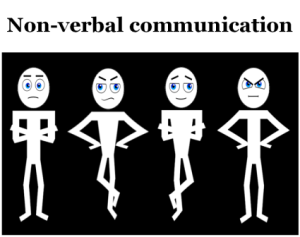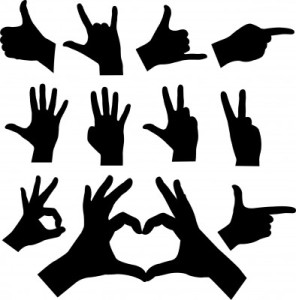 Cross-cultural difference are not only refers to verbal communication, but also existed in all sorts of human activities between foreigner tourist and local hosts. Non-verbal behaviour is a significant element for a tourist because it is easier to be noticed and understood than verbal communication. Researchers believed that most of the message is communicated through non-verbal language in terms of posture, gesture and facial expression. What is more, the behaviours of greeting, formality as well as body touching are important means of non-verbal communication which are reflected by tourists.
Cross-cultural difference are not only refers to verbal communication, but also existed in all sorts of human activities between foreigner tourist and local hosts. Non-verbal behaviour is a significant element for a tourist because it is easier to be noticed and understood than verbal communication. Researchers believed that most of the message is communicated through non-verbal language in terms of posture, gesture and facial expression. What is more, the behaviours of greeting, formality as well as body touching are important means of non-verbal communication which are reflected by tourists. Non-verbal communication is an important factor that tourism hosts have to take into consideration. Likewise the verbal communication which is indispensable, to tourism hosts, non-verbal communication is important as well. For instance, for Chinese people, there is not too much body touch between male and female. They prefer to smile and pad without touching. The only touching is hands shaking while first meet which is widely being accepted recently. Therefore, hosts should avoid much body contact. This names cards which be considered the representation of person’s face should fully aware by hosts. It is suggested to “pass them with two hands” as well as “accept them in a similar fashion” when give name cards to customers. Meanwhile, they should be accepted respectfully and reading carefully the names cards of their customers, which is a sort of etiquette in international business. It is better, especially for tourists who from Japan and Korea, to pass and receive all the objects to use both hands. What is more, gesture in terms of a kind of body language can easily be identified by hosts. People from different cultural backgrounds have different speculations of body languages. Several examples are provided below which present the different features of body languages of Asian people.
Non-verbal communication is an important factor that tourism hosts have to take into consideration. Likewise the verbal communication which is indispensable, to tourism hosts, non-verbal communication is important as well. For instance, for Chinese people, there is not too much body touch between male and female. They prefer to smile and pad without touching. The only touching is hands shaking while first meet which is widely being accepted recently. Therefore, hosts should avoid much body contact. This names cards which be considered the representation of person’s face should fully aware by hosts. It is suggested to “pass them with two hands” as well as “accept them in a similar fashion” when give name cards to customers. Meanwhile, they should be accepted respectfully and reading carefully the names cards of their customers, which is a sort of etiquette in international business. It is better, especially for tourists who from Japan and Korea, to pass and receive all the objects to use both hands. What is more, gesture in terms of a kind of body language can easily be identified by hosts. People from different cultural backgrounds have different speculations of body languages. Several examples are provided below which present the different features of body languages of Asian people.China
Sucking air through the teeth occurs when something is surprising or difficult. In China it is best to change the request to avoid the embarrassment of having to say “No”. The host always has his back to the door while the chief guset faces the door. To beckon someone, the palm faces downward and the fingers are moved in a scratching motion. Bones are often left alongside the dish. When finished eating the custom is to place the chopsticks parallel across the bowl.
Indonesia
Indonesians rarely disagree in public and will laugh together and hold them over their heads. Guests do not drink until the host begins. Where the table is large, rapping the knuckles on the table is a form of restaurants people may share tables.
Japan
Direct eye contact can be seen as intimidating. Bowing in greeting is customary. Waving the hand in front of the face signals “I don’t know”or “I don’t understand”. A waiter’s attention is attracted by catching his eye and dipping the head. Listening without interruption is polite. A Japanese person wearing a mask in public probably has a cold.
Korea
The Western gesture for “come here” is only used for dogs. To beckon someone in Korea the arm is extended, palm down and a scratching motion is used. Drunkenness is quickly forgiven.
Thailand
